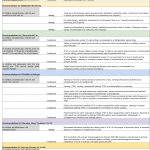
iLoveCoffeeDesign / shutterstock.com
CHICAGO—The treatment of patients with juvenile idiopathic arthritis (JIA) is historically directed by clinical subtype. During a session at the 2018 ACR/ARHP Annual Meeting, speakers addressed the biological classification and treatment of JIA, discussing draft guidelines and recommendations, the impact of computer modeling on identifying JIA subtypes and subgroups of chronic arthritis.
Guidelines & Recommendations
Timothy Beukelman, MD, MSCE, associate professor of Pediatrics at the University of Alabama, Birmingham, opened the session by presenting the draft ACR and Arthritis Foundation guideline for the treatment of JIA. Although currently in draft form, significant changes to the recommendations are not anticipated during the approval process, Dr. Beukelman explained. The guideline reflects new developments in polyarthritis, including newly approved treatments and studies examining the effects of initial treatment choices. It also has an increased emphasis on sacroiliitis and addresses enthesitis for the first time.
The guideline includes 39 recommendations, and Dr. Beukelman highlighted select recommendations during the session. All recommendations required a 70% consensus, and each has a quality of evidence level and a strength of recommendation. Strong recommendations were issued when the panel was confident the desirable effects of the intervention outweighed the undesirable effects, as well as when the recommendation apply to almost all patients. Dr. Beukelman explained 80% of the recommendations were conditional rather than strong. Conditional meant the recommendations apply to most patients, but patient preference and other factors must be considered.
The recommendations for polyarthritis should be applied to children with JIA who have had more than five cumulative joints affected and not applied to children with systemic arthritis or active sacroiliitis. Several general recommendations are made for patients with polyarthritis including the use, conditionally, of methotrexate over leflunomide or sulfasalazine. Subcutaneous methotrexate is also conditionally recommended over oral methotrexate. Additionally, combination therapy with biologic plus non-biologic is conditionally recommended over biologic monotherapy.
The guideline conditionally recommends that patients with polyarthritis with moderate or high disease activity should receive bridging therapy with a less than three-month course of oral glucocorticoids. The guidelines strongly recommend initial therapy with disease-modifying anti-rheumatic drugs (DMARDs), as opposed to non-steroidal anti-inflammatory drug (NSAID) monotherapy. Additionally, initial therapy with DMARDs is conditionally recommended over initial therapy with biologics. However, according to the guideline, biologics may be an appropriate initial therapy for patients with involvement of high-risk joints, high disease activity and at high risk of disabling joint damage.
The guideline also makes subsequent therapy recommendations for polyarthritis. In patients with low disease activity, escalation of therapy is conditionally recommended over no escalation. Such escalation may include intra-articular glucocorticoid injection or an increase in the dose of, or a change in, DMARD or biologic therapy. For patients with moderate or high disease activity after the first tumor necrosis factor (TNF) inhibitor, the guidelines conditionally recommend switching to a non-TNF inhibitor biologic.

